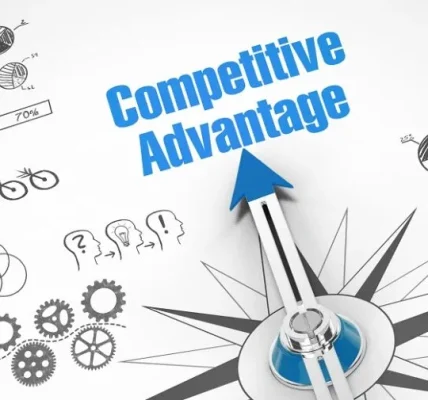Introduction
In fast-moving markets and ambiguous environments, decisiveness is one of the most visible and valuable leadership traits. It’s not merely the ability to make a choice; it’s the capacity to make timely, well-informed, and morally grounded decisions that align people, resources, and strategy toward measurable outcomes. In this guest post we’ll explore why decisiveness matters, what it looks like in practice, the cognitive and organizational foundations that support it, frameworks and tools leaders can adopt, pitfalls to avoid, and how to measure and develop decisiveness across teams. This article is structured for leaders who want practical, actionable guidance—not just inspiration.
Why decisiveness matters more than ever
Modern organizations face complexity on multiple fronts: rapid technological change, distributed teams, regulatory uncertainty, and intensifying competition. Under these conditions, delay is a real cost. Indecision leads to:
- Missed market windows and lost first-mover advantages.
- Wasted resources from prolonged analysis and stalled execution.
- Declining morale as teams wait for direction.
- Erosion of stakeholder confidence (customers, investors, partners).
Decisive leaders convert ambiguity into direction. They prioritize, allocate scarce resources fast, and accept the disciplined risk that comes with imperfect information. Crucially, decisiveness does not mean impulsiveness; it means moving with reasoned speed.
What decisiveness looks like in practice
Bold, but reasoned action
A decisive leader gathers the essentials—facts, constraints, time horizons—then commits. You’ll see them set clear priorities, announce a chosen course, and define success criteria and fallback options.
Rapid prioritization
Decisiveness focuses on what changes outcomes most quickly. This often involves saying no to good ideas in order to say yes to the right ones.
Clear communication and accountability
Once a decision is made, a decisive leader communicates the why, what, who, and when, and establishes accountability for implementation and learning.
Comfort with controlled failure
Decisive organizations allow small, contained experiments to fail fast and capture learnings. This cultural tolerance is a backbone of continuous improvement.
Cognitive foundations of strong decision-making
Decisiveness rests on mental habits and cognitive infrastructure:
- Expert pattern recognition — leaders who repeatedly operate in a domain build mental models that reduce the time needed to interpret signals.
- Bias awareness — recognizing common traps (confirmation bias, status quo bias, sunk-cost fallacy) helps keep decisions clean.
- Probabilistic thinking — viewing outcomes in likelihoods rather than certainties enables graded commitments.
- Emotional regulation — stress and ego can distort choices; emotional discipline preserves clarity.
Training these cognitive skills—through deliberate practice, reflection, and feedback—makes speedy decisions accurate more often.
Organizational enablers of decisiveness
Decisiveness isn’t only an individual trait. Organizations must create the conditions that allow leaders to decide effectively:
1. Structure and roles
Clear decision rights (who decides what) prevent paralysis. Use simple models such as RAPID (Recommend, Agree, Perform, Input, Decide) or RACI to assign responsibility and speed review cycles.
2. Information hygiene
Decisions require reliable inputs. Invest in concise reporting, actionable dashboards, and data governance so leaders are not sifting through noise.
3. Fast feedback loops
Shorten the time between action and learning—customer tests, pilot projects, and incremental releases help leaders validate or correct course quickly.
4. Delegation and empowerment
Leaders scale decisiveness by empowering capable teams to make decisions within defined boundaries. This requires training, trust, and a culture that supports accountable autonomy.
5. Psychological safety
Teams must feel safe raising dissenting views and flagging early signs of failure; this prevents blind-spots and reinforces good decision hygiene.
Practical frameworks and tools for decisive leaders
Leaders can adopt well-tested frameworks that structure thought and speed execution:
- OODA Loop (Observe, Orient, Decide, Act) — accelerates cyclical decision-making in dynamic contexts.
- RAPID / RACI — clarifies who does what and avoids handoff delays.
- Decision matrix (Impact × Effort) — prioritizes initiatives by value and feasibility.
- Pre-mortem analysis — imagine the future failure and work backward to identify risks and mitigation steps.
- Checklists and decision templates — standardize routine decisions to reduce cognitive load.
Using these tools consistently reduces noise and enables faster, repeatable decision cycles.
Balancing speed and quality: the tradeoffs
Speed and accuracy are often framed as a tradeoff, but wise leaders optimize both through staging:
- Use fast, low-cost experiments to gather signals when uncertainty is high.
- Reserve slower, more rigorous processes for high-impact, irreversible choices (e.g., M&A, large capital spends).
- Adopt time-boxed decision windows—define how long you will research before committing.
This staged approach converts unknowns into manageable risks.
Measuring decisiveness and its impact
To treat decisiveness as a leadership competency, measure it. Useful indicators include:
- Decision velocity — average time from problem identification to decision.
- Execution lead time — time from decision to first validated outcome.
- Rework rate — frequency decisions are reversed or heavily modified.
- Outcome delta — measured improvement attributable to the decision (revenue, cost, user engagement).
- Team confidence — surveys on clarity of direction and trust in leadership.
Correlate these metrics with business outcomes to understand where decisiveness drives value—and where it needs rebalancing.
Developing decisiveness as a leader and across teams
Individual practices
- Prepare decision templates for recurring choices.
- Practice scenario planning to better anticipate alternatives.
- Keep a decision journal: write the decision, assumptions, expected outcomes, and learnings; review quarterly.
- Seek calibrated feedback from trusted advisors and peers.
Team-level interventions
- Run decision sprints: structured workshops that force rapid synthesis and commitment.
- Simulate crises: tabletop exercises that build pattern recognition under time pressure.
- Train for delegation: teach managers to define guardrails and let teams operate autonomously.
- Reward prudent decisiveness: recognize not just hits but disciplined, well-constructed decisions—even when outcomes are uncertain.
Common pitfalls and how to avoid them
- Paralysis by analysis: set decision deadlines and use minimum viable information.
- Overconfidence: couple conviction with contrarian reviews; test critical assumptions.
- Groupthink: solicit dissenting opinions and appoint a “devil’s advocate.”
- Micromanagement: decentralize decisions where possible and document escalation rules.
- Ignoring ethics: speed must not compromise transparency, compliance, or fairness.
Addressing these pitfalls requires intentional leadership practices and governance.
Case examples (anonymized patterns)
- A mid-sized SaaS firm regained momentum by instituting weekly decision reviews limited to three priority bets; decisions were time-boxed and owners assigned—resulting in faster product launches and clearer team focus.
- A retail chain used pre-mortems before major store rollouts; identifying operational blind spots reduced rollout failures by a measurable percentage.
- A healthcare startup created a rapid clinical validation loop for product features, balancing regulatory rigor with iterative learning—shortening time-to-insight while maintaining compliance.
These patterns emphasize structured speed—not reckless haste.
Ethical and cultural dimensions
Decisiveness must be anchored by values. Leaders who prioritize short-term gains over ethical standards invite long-term reputational and legal costs. Embed ethical checkpoints into decision processes, require impact assessments for high-risk choices, and ensure stakeholder voices (customers, employees, communities) inform major moves. A values-aligned decision culture builds trust—a multiplier for strategic choices.
Actionable checklist for leaders
- Define decision rights for top 20 recurring decision types.
- Create a one-page decision template: context, options, risks, recommended choice, success metrics, owner, review date.
- Time-box exploratory analysis—use a fixed window for research.
- Establish a decision journal and a quarterly review ritual to surface learning.
- Train two levels down: teach managers how to make and escalate decisions.
- Measure decision velocity and outcome delta quarterly.
Conclusion
Decisiveness in business leadership is a strategic capability: a blend of mental habits, organizational design, clear frameworks, ethical grounding, and disciplined measurement. When leaders move with reasoned speed—empowering teams, staging risk, and learning from outcomes—they create alignment, momentum, and sustained advantage. Decisiveness is not a personality quirk reserved for a few; it is a practical skill that leaders can cultivate, scale, and institutionalize to transform ambiguity into opportunity.
FAQ
Q1: How can I assess my current decisiveness level as a leader?
You can assess decisiveness through a short 360-degree feedback focused on decision speed, clarity, and outcomes, combined with tracking your decision journal for patterns: how often you hit deadlines, how often decisions need rework, and how frequently your team seeks escalation.
Q2: Which decision types should be centralized vs delegated?
Centralize decisions that are mission-critical, irreversible, or require cross-unit tradeoffs (e.g., corporate strategy, M&A). Delegate operational, customer-facing, and rapidly iterating choices to teams that can act and learn quickly, with agreed guardrails.
Q3: What are practical exercises to improve decisiveness under pressure?
Run timed decision drills: present teams with a realistic scenario and a fixed time to propose a solution and execution plan. Conduct post-game retrospectives focusing on assumptions and missed signals to accelerate learning.
Q4: Are there assessment tools that quantify decision quality?
Yes—decision quality frameworks measure clarity of objectives, range of alternatives, use of evidence, assessment of risks, and implementation plans. Pair qualitative scoring with quantitative outcome tracking to get a composite view.
Q5: How should decisiveness be evaluated in performance reviews?
Include metrics like decision timeliness, measurable outcome ownership, and quality of post-decision learning. Reward disciplined risk-taking and transparent reasoning—not just successful outcomes—to avoid gaming the system.
Q6: Can cultural differences affect how decisiveness is perceived?
Absolutely. In some cultures, consensus and hierarchy value deliberation; in others, rapid individual action is prized. Leaders must adapt: be decisive in a way that respects local norms while preserving alignment with overall speed requirements.
Q7: When is indecision the right choice?
Indecision can be prudent when the choice is irreversible with high impact and when more information will materially change the expected value of alternatives. In such cases, structured information-gathering with defined timelines is the better path than indefinite delay.








